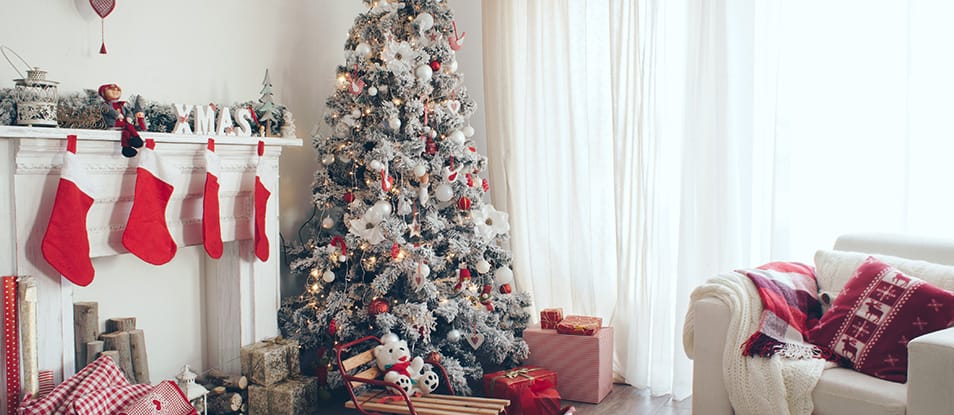

- Authenticity
Realistic fake Christmas trees are abundant in 2018. There are even contemporary alternatives that may better suit your choice of home décor. However, one of the most cherished real Christmas tree benefits is the welcoming and authentic scent of fresh pine, which can’t be faked, even with a fragrant spray.
- Availability
Easily assembled and compact for storage, you can order an artificial tree online and pick it up from many high-street stores in a matter of moments. But do you know where to buy a real Christmas tree? They’re available at many home improvement stores and garden centres, or you can check with local Christmas tree farms and take a fun trip with the family to pick one out.
- Convenience
Without the need for water and needles that don’t drop off, choosing an artificial Christmas tree means far less for you to clean up in your home. One sensible way to reduce the nuisances of a real tree is to consider renting one instead: which is picked up after the festive period and returned to a field, where it is planted to continue growing.
- Footprint
Not withering away after a matter of weeks, an artificial tree will of course last longer. You might think it therefore treads a lighter carbon footprint, but the plastic used to make it, along with the industrial emissions required to produce it, means you would actually have to keep it for at least 10 years to make it the greener choice of the two.
- Cost
As a one-time purchase that can last for many years, an artificial tree is naturally the most cost-practical choice. That doesn’t mean a real tree has to be expensive though. By shopping around and picking carefully, you can keep the cost reduced. A traditional Norway Spruce might lose their needles more quickly, but they are typically cheaper than a Nordman Fir.
- Decoration
One thing both real and artificial trees have in common is unlimited decoration options. Whether it’s matching your tree with the colour palette of your home, or crafting some creative items to place on it, a Christmas tree is but a canvas for your festive tastes. Some argue it’s more satisfying to decorate a more unruly, natural tree, but a fake one won’t hold you back from unleashing your ideas.
So, does that make a real Christmas tree best? Or is a fake Christmas tree easier? That’s for you to decide… but keep these essentials in mind and your home will have a perfect tree this Christmas.



